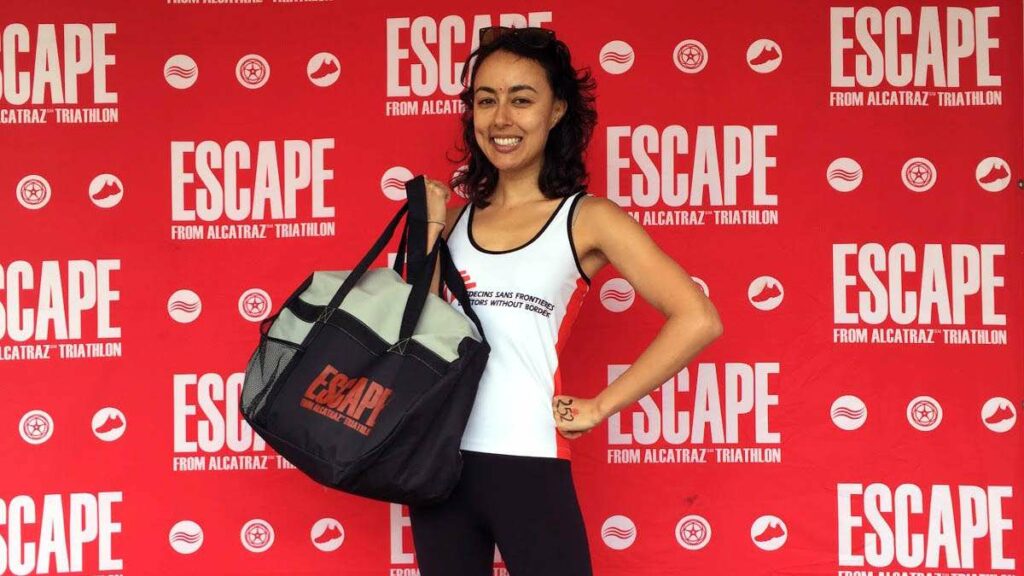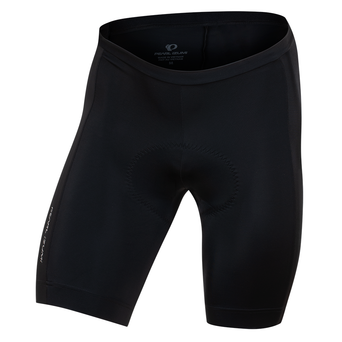Unlike most triathletes, I entered this sport by way of the swim leg. I always felt comfortable in the water–I had just never taken a formal swim class in my life.
My first trip to the beach was at two-weeks old as daytime temperatures hit the 100’s–a record high for summer or any other time of year in San Francisco. I went on to spend my childhood summers at Raging Waters and McNear’s Beach becoming even more accustomed to the water. While in college my desire for water-based fun continued with Surfing 101 at the University of California–Los Angeles. My favorite part of taking Beginning Sailing, another college course, was capsizing the dinghy. Water had become such a natural space for me.


After college, I continued attempts to become a decent surfer and frequented Linda Mar Beach in Pacifica, CA. Most days consisted of paddling out past the break and rocking up and down with the gentle swell, admiring the dozens of other surfers getting out in their 4/3 mm wetsuits, gloves, booties, and, occasionally, hoods. Being out there, even if I wasn’t able to catch a wave that day, was peaceful and meditative–not to mention a good upper arm workout. After acquiring this wetsuit that actually kept me reasonably warm in the 50-something degree Pacific waters, I started thinking that it wasn’t so crazy to swim in the Bay Area after all.
In 2007, I was working at a boutique PR firm in San Francisco. My co-workers and I jokingly came up with the idea to do The Escape from Alcatraz corporate relay. We figured we might get the company some publicity, and hopefully, get them to pay our entry fees. As the proposal kept rolling with the idea that none of us thought we’d execute, I volunteered for the swim. I figured, “I already own a wetsuit.” Jon was on the University of California-Davis cycling team, so he naturally chose the bike and Jenny was a runner. There it was, we had our team.

Team Connecting Point actually did pretty well. I didn’t expect to finish the 1.5-mile swim in under an hour, so Jon and Jenny were shocked to see me running out of the water after 40 minutes. Jon hurried to get to his bike and I tagged him in transition for the next leg. A native San Franciscan, he blazed up and down those world-renown hills. Our town may be at sea-level, but the hills, particularly on the Escape course. are not for the faint of heart. Jenny pulled through with an incredibly strong finish, crushing the sand riddled run portion. We had set the bar low for ourselves and came out surprisingly satisfied and accomplished.
That would be my only triathlon for the next six years. Only then did I realize how many things I did “wrong”.
I never took a swim class, or learned that I should alternate sides when breathing. Alternating sides when breathing reduces fatigue so you don’t tire out one side. It can also help with sighting and swimming in a straight line.
I wore a surf suit. Only years later did I recall other swimmers on the ferry to Alcatraz asking why mine looked different and zipped only at the neck!
Swimming wetsuits have different thicknesses in different areas of your body. It’s thicker in the chest to keep you warm, and thinner around the shoulders and arms to allow for more movement and flexibility. It’s designed to help with buoyancy.
Right or wrong, I finished and was happy with the experience and outcome. Had I fully thought through all aspects: like the Great White Sharks in the Bay; tried to see through the murky water during open water swims in Aquatic Park; realized how much gear I could and should get to do a proper race—I probably wouldn’t have even attempted the event. Sometimes it’s plain and simple naivety and enthusiasm that pulls you into amazing experiences.
A few tips from the triathlete who literally jumped in the deep end:
- Ask others about their first experience. When you doubt your abilities, talk to people that have done what you want to do. Like me, chances are they didn’t know what they were doing either.
- Just sign up. Once I register for a race, it goes on the calendar. I put money into it. I tell people. It becomes real. I don’t want to give up on a commitment.
- Do it for someone else. Most of the races I’ve done have a charity component. Sometimes I know someone affected by the disease or cancer, other times I don’t. You’re bringing awareness about a cause directly to your friends and family. The charity receives money and support for their research. It’s a win-win situation.

I finally raced the full Escape from Alcatraz in 2015 with Team Doctors Without Borders. It was a great experience working with the organization, receiving training from my first virtual coach, and being surrounded by supportive friends that joined training rides, donated to the cause, and showed up to support on race day.
There are numerous resources to help you achieve your goal. Join a local cycling or triathlon club. Find interesting Facebook groups like Women for Tri. Search online for inspiration and resources like the Endure and Enjoy blog. Find a training plan on TrainingPeaks. Hire a coach. But honestly, all that stuff can come later.
Right now, think about that race that you thought would be amazing to do “one day”. Or one that came up in a conversation with friends or colleagues. Now dive in, it’s #dreamingseason.





